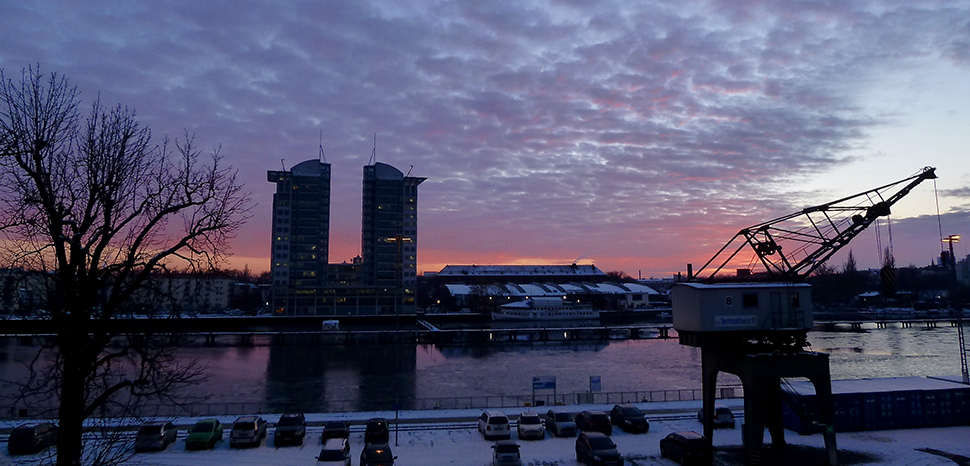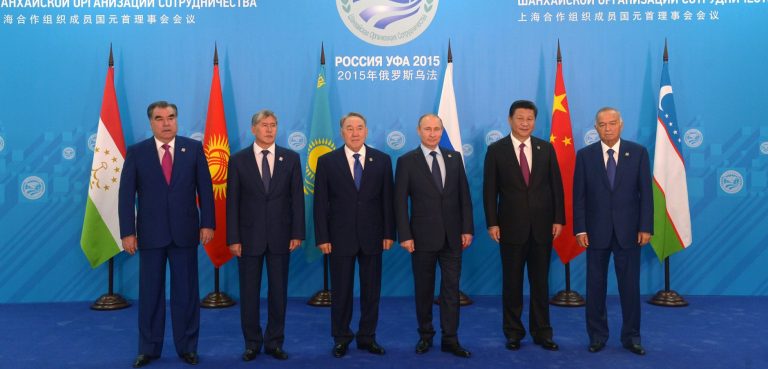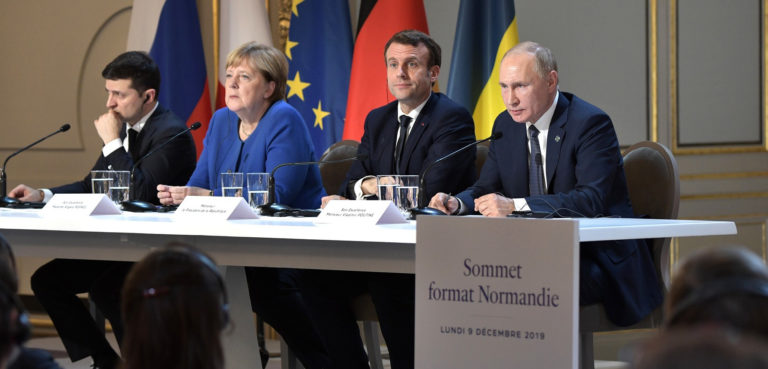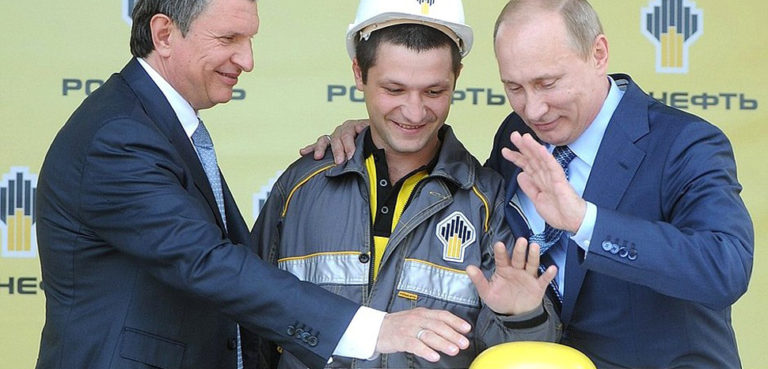*This article was updated on September 7 2022 (see below)
The trade war between Russia and NATO alongside the war in Ukraine has already triggered serious concerns of a possible energy shortage for the upcoming winter in Eastern Europe and Germany, as these regions get much if not most of the energy needed not only for their industrial sector but also to heat their residential areas from Russian natural gas deliveries. Germany is already proposing to shelter people in heated stadiums, and the European Commission is already recommending a 15% cut for EU member states in natural gas consumption.
The possible impact of such an energy crisis in these regions should not be underestimated and could be far worse than anyone at this point would expect. Through disturbances in natural gas and crude oil deliveries, Moscow already appears to be flexing its muscles with the prospect of weaponizing the dependence of Eastern Europe and Germany on Russian energy. Russia can use its ability to cause considerable economic, and to a certain degree even existential pain for these societies, to try to turn public opinion in these societies against NATO’s war effort supporting Ukraine, or in the most extreme case, possibly even against NATO itself, as the narratives by pro-Russian groups in these countries are already blaming Ukraine, NATO, and the US for the already present economic hardships.
A worst-case outcome could be mass disruptions in the heating systems of residential areas of these countries. Given the cold winters of the region, the prospect of people freezing in their homes or having to relocate to shelters for weeks, or possibly even longer, hits the very lowest level of Maslow’s hierarchy of needs. Such a situation could cause unprecedented mass discontent in these societies, which Russia could use to attempt to virtually blackmail Eastern Europe and possibly even Germany out of NATO without a single gunshot. Given the vast natural gas and crude oil reserves of the US and Canada, in this most extreme case, a Lend-Lease framework offered to these countries regarding these commodities may be the only way to secure the future of the alliance.
The war in Ukraine became a standing war basically in April. Seemingly in this case unilaterally declaring a limited victory would be the lesser of two evils for Russia: About one-fifth of Ukraine’s territory is already under Russian occupation and getting significantly further forward does not seem to be possible given the extremely slow pace of advance and high casualties of Russia, and continuing a standing war of attrition would only cause Russia’s already high losses to mount even further. But Russia does not seem to be interested in announcing a ceasefire to freeze the conflict along the present front lines yet. To turn the course of the war, Russia would need some game-changing event to happen, and the fact that they are still pushing on suggests that they are indeed waiting for such an event.
Russia’s only chance to turn the war may be undermining Western commitment to help Ukraine and keep it outside Russia’s control. Given emerging energy worries in Europe, incidents of Russia cutting crude oil or natural gas deliveries to Europe for brief periods during recent months, and the track record of Soviet foreign policy in the subversion of enemy societies as one of its main tools, causing an energy crisis in Eastern Europe and Germany and trying to make these societies blame Ukraine, NATO support for Ukraine, and NATO itself may be the most suitable option. Should Russia manage to cause mass discontent and immense public pressure in Germany and NATO, member states in Eastern Europe pushing governments to back off from the support of Ukraine, this would mean a possible breakthrough that Russia could never hope to achieve on the battlefield.
Of course, it is not sure yet how far is Russia willing to go. It may or may not further weaponize its energy supplies to Europe in the upcoming winter. However, even the trade war that has already been going on as of now between the EU and Russia has already caused considerable economic hardship for Eastern Europe and Germany, and we also do not know where the limits of these societies lie, before economic hardship would make them willing to follow the narrative of pro-Russian groups, starting to blame the support for Ukraine, NATO, and the pro-US alignment of their governments in general for their hardships. Freezing in their homes may not even be necessary; even a severe recession caused by the energy crisis may be sufficient, and the problem with this is that when the society of a country falls over its pain threshold, then it is already too late.
On the other hand, Russia can suddenly change both its actions and demands at will. Regarding Russia’s possible actions, the only solid base to resist blackmail would be if the countries in question had their gas storages filled before the winter, which generally occurs by October. So if by October the countries in question do not have enough gas in storage to survive the winter, then that would be an early sign of trouble and likely upcoming Russian blackmail. As of the end of July 2022, Europe had its gas storages only 66% filled, and analysis by Wood Mackenzie suggested that Europe will have its storages filled at only a 75-80% level by winter, which would mean that although the countries in question may be able to provide heating for their population, they would however basically run out of gas by March without further supplies, meaning considerable economic damage by the spring. However, Russia still has time till October to simply cut further supplies, leaving Europe with filling levels anywhere between the late July 66% and the predicted 75-80% levels at will, forcing these countries to choose between providing heating for their population and running their industries.
Russia can also suddenly announce and change demands at will. Let’s say it gives an ultimatum demanding that the countries boycott any help for Ukraine. Let’s say that after such an ultimatum, Russia can sense that the targeted societies are softening; the Kremlin thus goes one step further and demands the removal of NATO infrastructure from all countries that joined the alliance after 1997, in line with Putin’s December 2021 memorandum. Or if it can sense sufficient public discontent, what if it goes even further, and demands an overall withdrawal from NATO? Stating that from then on, no NATO country will receive a single drop of Russian gas or oil again?
Of course, this may sound far-fetched; however, in the worst case, if Russia reduces gas deliveries before October to a level where it would leave residential areas without sufficient heating, depriving masses of the population of their very basic needs, then freezing (and due to skyrocketing energy prices, possibly even starving) masses may very well take on the streets, demanding their governments meet Russia’s demands to survive. Russia can also play with timing as a psychological factor. Let’s say after not delivering sufficient quantities by October for these countries to properly heat their residential areas throughout the winter, the countries in question get such an ultimatum at the end of January, after already having spent December and January freezing, but with frosty February is still to come.
Of course, Russia taking over all of Ukraine and making it a satellite of its own virtually re-assembling the USSR would increase long-term Russian strategic pressure on Central and Eastern Europe, bringing the vulnerability of the region to Russian pressure to a menacing level. This would especially be a sinister turn of events for the region given the December 2021 memorandum of Putin, which already demanded the removal of NATO infrastructure from countries that joined the alliance after 1997, signaling malicious intentions towards Eastern Europe. However, so far the Western narrative regarding the war puts the focus much more on the moral aspects of the war rather than such strategic concerns, so not everyone in these societies may be fully aware of the strategic aspects of the conflict. And for many among even those who are aware, short-term economic hardship could easily appear a more vital threat than such long-term geopolitical concerns, especially if these economic hardships include people freezing in their homes. And if masses of people are deprived of such basic needs, then the pressure on governments and political elites may become so immense, that they may have no choice but to give in to Russian demands, even against their better judgment. Unfortunately, if Russia can manage to inflict sufficient levels of pain and mass discontent, this logic may also work even for possible withdrawal from NATO.
We do not know whether Russia will go so far of course, but it certainly has the strategic capability to do so. And the mere capability may influence leaders of the countries in question to think twice throughout the upcoming winter about how far they should go in support of Ukraine and the US effort to keep Russia out of there. And should Russia turn this capability into action, that would – with no exaggeration – become the gravest threat to NATO’s integrity that the alliance has ever faced. And given the pivotal role NATO plays in the wider US alliance system, this would also likely represent the gravest threat to Pax Americana since 1945, especially if the story ends with Germany and all countries east of it withdrawing from NATO.
Even if this worst-case scenario does not occur, there are still multiple less extreme outcomes of the European energy crisis where the integrity of NATO gets damaged beyond repair. Even if people are not outright freezing, a major recession can be sufficient for Russian propaganda to make serious inroads in these societies. And above all, even if the threat of energy blackmail is not actually realized, the mere possibility of Russia playing the energy card will loom as a psychological factor for decision-makers in these countries, influencing their course of action.
Also, an important question is that if Russia has such strategic capabilities, then what reason – if any – does it have not to use them? Especially since it increasingly seems that this would be Russia’s last and only option to achieve a strategic victory (sort of the literal nuclear option). The war became a standing war in April, and even more so since the capture of the twin cities of Sievierodonetsk and Lysychansk in early July. It seems without such a move Russia can achieve no more than an armistice roughly along the present front line, which would certainly be well short of a strategic victory, leaving 80% of Ukraine’s territory intact, and a staunch de facto US ally in the future. Even worse than that, this may not even be sufficient to be presented to the Russian domestic public opinion as a victory, which raises the risk of regime change for Putin. Continuing the standing war of attrition without such a game-changing move on the other hand would be even worse, as it would cause Russian losses to mount further. Ukrainian losses are high as well of course, but Russian and Ukrainian objectives are different: Ukraine merely aims to survive, while Russia aims to maintain its great power status, which it could suffer a serious setback if the number of its operational main battle tanks, for instance, falls to less than half of what it had before the war. Not to mention the possible impact of prolonged sanctions. Gloomy prospects, unless Russia makes some game-changing move. So it is not merely that Russia has little reason not to use these capabilities during the upcoming winter, but we can rather ask, whether Russia can even afford not to do that.
The only way to secure the future of NATO against such a threat may be Lend-Lease provided by the US for Eastern Europe and Germany. The vast natural gas and crude oil reserves and production of the US and Canada would certainly be sufficient to supply Eastern Europe and Germany during the upcoming winter. Of course, it is technically possible for countries of Central and Eastern Europe to delink themselves from Russian gas and free themselves from Russian blackmail in a similar manner as Finland has already achieved, and such should be the long-term solution, however, the process could take multiple years, and if people are expected to freeze for two or three winters in their homes during the process before we get there, that could be expected to produce some of the worst outcomes discussed above. Also, as shortages may cause energy prices to temporarily skyrocket to unreasonably high levels in these regions, merely selling these products at the market price would not be a suitable solution, as it would very likely still run these countries into a severe recession, and possibly even disturbances in the heating of residential areas. Therefore, the only suitable solution for the looming energy crisis of Central and Eastern Europe would likely be Lend-Lease to provide LNG and oil products. Lend-Lease saved the UK and arguably the Soviet Union during WW2, and now may be time to use it to secure NATO’s future.
*Author addendum from September 7, 2022:
I have received criticism for the original article regarding whether or not the LNG regasification capacities of the EU would be sufficient for such a solution. Let’s be specific here:
- As of 2021, 90% of the EU’s annual natural gas consumption came from imports. 41% of these imports came from Russia, which equals 37% of the total annual consumption
- As of 2021, 20% of the imports were LNG, which equals 18% of total consumption
- Total LNG regasification capacities of the EU are estimated at roughly 40% of total consumption. This leaves free LNG regasification capacities not used in 2021 equal to about 22% of the total annual consumption
- 20% of 2021 LNG imports, however, came from Russia, which equals about 4% of the total annual consumption. This means that, should Russian imports be completely halted, this 4% representative of LNG imports from Russia would equate to free LNG regasification capabilities, raising them to 26% of total annual consumption
- Total gas storage capacities of the EU equal 21% of the annual consumption
- In mid-August 2022, gas storage reached a filling level of 75%, which equals 16% of the annual consumption
- The winter heating season in Europe lasts from 1 October to 1 April
- The time period from mid-August 2022 to April 1 2023 covers seven and a half months, excluding April, May, June, July, and the first half of August 2023 from a total one year period.
- April, May, June, July, and the first half of August 2021 accounted for 29% of annual consumption. Thus, if we assume the same for 2023, for the 7.5 months from mid-August 2022 till the 1 April 2023, we can calculate a demand equal to 71% of the annual consumption. Of course, import capacities cannot be expanded to the levels of heightened gas consumption during the winter heating season; thus, as a conservative estimate, we work with the assumption that import capacities are spread roughly evenly throughout the year. Regarding the given 7.5 months of the year, calculating with only 7.5/12 of the total annual import capacities as available, which equals just 63% of annual imports.
- Thus, if we model a scenario where from mid-August 2022, all Russian gas imports are halted, but LNG imports run at a maximum of the regasification capacities of the EU (with Lend-Lease or otherwise), a conservative educated guess for available natural gas sources would be the following:
- 63% of domestic EU natural gas production: 6% of annual consumption
- Storage filled at mid-August 2022 filling levels: 16% of annual consumption
- 63% of annual non-Russian imports: 33% of the annual consumption
- 63% of free annual LNG regasification capacities: an additional 16% of annual consumption
Altogether this scenario, assuming that for the given time period all Russian natural gas imports are halted but LNG imports are increased to the maximum capacity of EU terminals, amounts to 71% of total annual consumption. This is equal to the estimated gas consumption of the time period from mid-August 2022 to 1 April 2023 – thus, the total regasification capacity of LNG terminals in the EU may be sufficient. Of course, the reality is much more complex: Not every EU member state has LNG terminals or gas storage; EU states are interconnected by gas pipelines which could help evenly distribute gas, but with varying capacities for each pipeline, requiring extraordinary logistical efforts. LNG export capacity of the US will reach 30% of EU consumption by 2023 – it was equal to just 10% of that level in early 2022 – while the EU in turn can also import LNG from other sources, first and foremost Qatar. On the other hand it is not just the quantity that matters, but also the costs that EU countries have to pay of it, and Lend-Lease would greatly ease that factor as well. But even if a US Lend-Lease may not be able to fully replace Russian imports, this still shows that it could provide a great degree of relief, which could very well be a game-changer in case Russia fully halts its deliveries.
The views expressed in this article belong to the authors alone and do not necessarily reflect those of Geopoliticalmonitor.com




